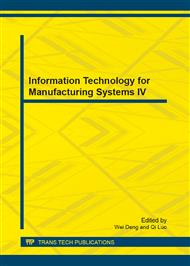[1]
J. F. Wilson: Practice and theory of electrochemical machining. New York, Wiley-Interscience (1971).
Google Scholar
[2]
J. A. McGEOUGH: Principles of electrochemical machining. Chapman and Hall (London and New York 1974).
Google Scholar
[3]
T. Gurumurthy, O. V. Krishnaiah Chetty, and Radhakrishnan: Smoothing of intial roughness in electrochemical machining. Int. J. Prod., Res., 16(6) (1978), 453-461.
DOI: 10.1080/00207547808930036
Google Scholar
[4]
S. C. Tam, N. H. Loh, and S. Miyazawa,: ECM-abrasive polishing of metals. Int. J. of Prod. Res. 27(10) (1989), 1757-1768.
DOI: 10.1080/00207548908942653
Google Scholar
[5]
S. J. Ebeid, and T.A. EI-Taweel: Surface improvement through hybridization of electrochemical turning and roller burnishing based on the Taguchi technique. Proc. IMechE Part B: J. of Eng. Manu. 219 (2005), 423-430.
DOI: 10.1243/095440505x32283
Google Scholar
[6]
J. J. Yi, C. M. Chen, X. Q. Tian, and B. Y. Ji: Basic experimental investigation of pulsed electrochemical mechanical polishing process. Surface Engineering. 25(7) (2009), 535-540.
DOI: 10.1179/174329409x397796
Google Scholar
[7]
J. Bannard: Electrochemical machining. J. of Appl. Electrochem. 7 (1977), 1-29.
Google Scholar
[8]
M. M. Loghrengel, I. Klüppel, C. Rosenkranz etc.: Microscopic investigations of electrochemical machining of Fe in NaNO3. Electrochimica Acta. 48(2003), 3203-3211.
DOI: 10.1016/s0013-4686(03)00372-4
Google Scholar
[9]
M. M. Loghrengel, C. Rosenkranz: Microelectrochemical surface and product investigations during electrochemical machining (ECM) in NaNO3. Corrosion Science, 47(2005), 785-794.
DOI: 10.1016/j.corsci.2004.07.023
Google Scholar
[10]
C. Rosenkranz, M. M. Lohrengel, J. W. Schultze: The surface structure during pulsed ECM of iron in NaNO3. Electrochimica Acta. 50(2005), 2009-(2016).
DOI: 10.1016/j.electacta.2004.09.010
Google Scholar
[11]
J. Hopenfeld, R. Cole: Electrochemical machining prediction and correlation of process variables, ASME Trans. of ASME J. Eng. Ind. B 8 (1969), 755–765.
DOI: 10.1115/1.3591685
Google Scholar
[12]
K. D. Vorlop, T. Tacke: Erste Schritte auf dem Weg zur edelmetallkatalysierten Nitrat‐und Nitrit‐Entfernung aus Trinkwasser. Chemie Ingenieur Technik. 61(10) (1989), 836-845.
DOI: 10.1002/cite.330611023
Google Scholar
[13]
U. Prusse, K. D. Vorlop: Supported bimetallic palladium catalysts for water-phase nitrate reduction. Journal of Molecular Catalysis A: Chemical. 173(1) (2001), 313-328.
DOI: 10.1016/s1381-1169(01)00156-x
Google Scholar
[14]
X. Hu, S. Ye, Y. He, and Y. Zhang: Harmless removal of nitrate-N in water by electrolysis catalytic reduction-chlorine oxidization. Research of Environmental Sciences. 24(5) (2011), 533-539.
Google Scholar


